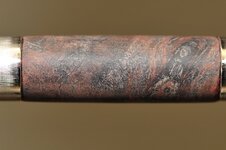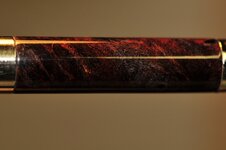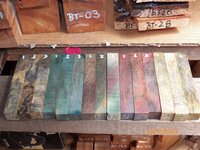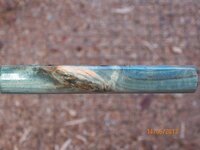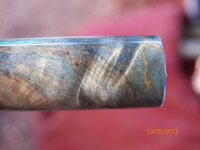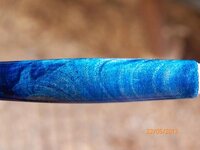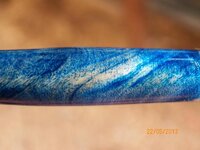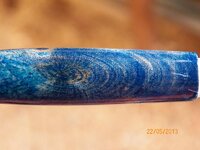PenAddict
Member
This blank is just giving me nightmares. It's a orange dyed, stabilized buckeye burl. I love the color of the finished blank but there is areas of gray color that detracts from the pen.
Attached are photos of both sanded and finished blank that I hope you'll see my problem. Not sure if it's in the grain or an issue of the dyes not impregnating. If it's the latter, I'd be very reluctant in buying any more of these blanks.
Anybody Know of a workaround or do I just toss it in the bone pile.
Attached are photos of both sanded and finished blank that I hope you'll see my problem. Not sure if it's in the grain or an issue of the dyes not impregnating. If it's the latter, I'd be very reluctant in buying any more of these blanks.
Anybody Know of a workaround or do I just toss it in the bone pile.

